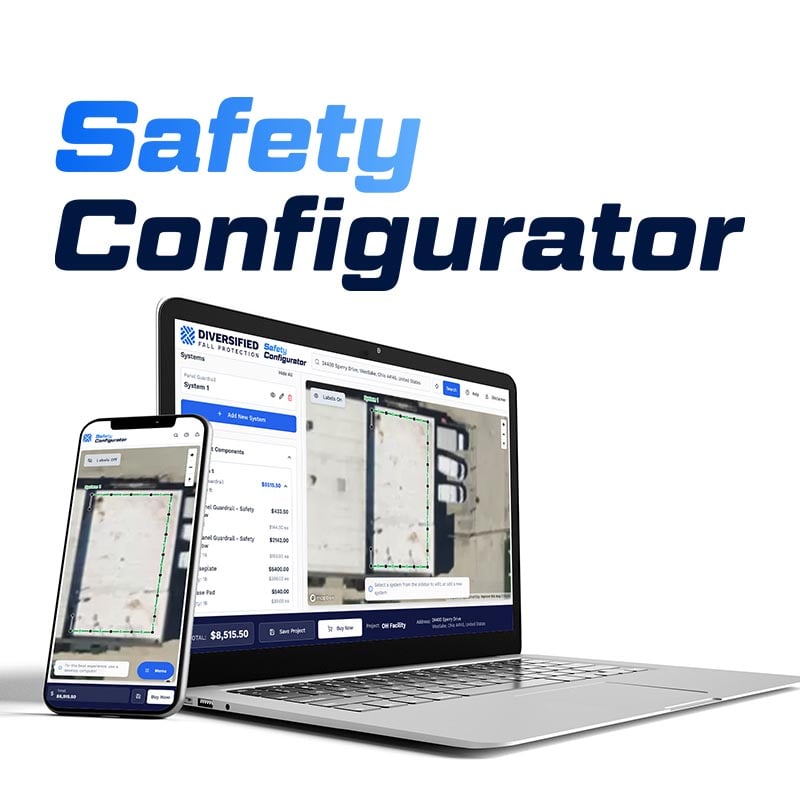Railcar Fall Protection
Fall protection for railcar loading and unloading applications is more complicated than meets the eye. You won’t see workers toiling away at impressive heights since most railcars are around 15 feet high. And to the untrained eye, rail yards and rail sidings appear less crowded than the manufacturing areas inside industrial facilities. That said, fall protection is an absolute necessity for personnel accessing the top surfaces of railcars and tankers. 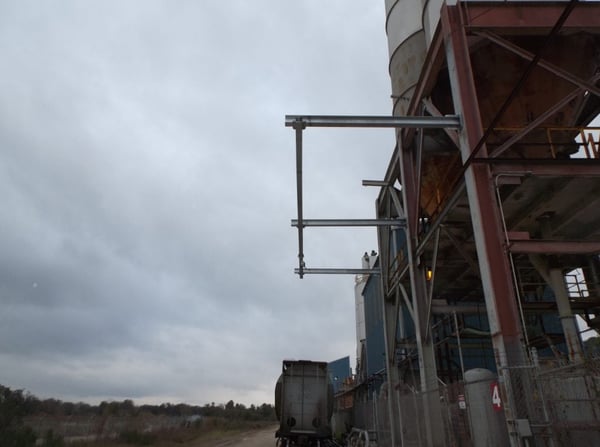
OSHA 1910 General Industry regulations require some form of fall protection for employees performing tasks at heights of four feet or more. Any unloading, loading, maintenance, or inspection activities on top of railcars and tankers are subject to the four-foot rule per OSHA regulations.
You might think that because these workers are performing tasks at heights that seem rather pedestrian compared to climbing a water tower or a cell phone antenna, the job of designing systems to arrest railcar falls is somehow less complicated, but this is not the case. Here’s why…
The first system design challenge with railcars is fall clearance distance. Approximately 15 feet separates your employee standing on top of the railcar and the ground. How do we arrest a fall before the worker strikes ground level?
If you have read our prior post on Calculating Fall Clearance Distance, you understand how system type (cabled-based horizontal lifeline versus rigid rail fall arrest system) and PPE (lanyards versus self-retracting lifelines) influence the distance a worker will drop before fall arrest. Matching the correct PPE and system style to the application requires the skills of a fall protection engineer who has earned the designation of a qualified person. OSHA defines a “qualified person” as follows:
“Qualified person” means one with a recognized degree or professional certificate and extensive knowledge and experience in the subject field who is capable of design, analysis, evaluation and specifications in the subject work, project, or product.
Another critical factor is who owns the rail tracks, siding, and how much clearance is required between the railcars and the support columns and beams used to construct the fall protection system. By way of example, most railroad companies require approximately 9 feet of horizontal clearance between the railcar’s mid-line and the face of a support column and 23 feet of vertical clearance between the top of the rail and any overhead structure.
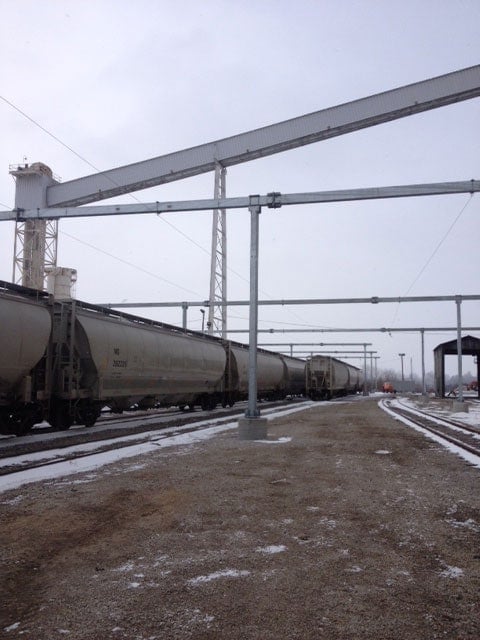 Horizontal lifeline with inverted U gallows
Horizontal lifeline with inverted U gallows
Regardless of whether a horizontal lifeline or rigid rail fall protection system is required for your rail application, one of the first design considerations is whether there is adequate space to pour foundations to support a gallows style system or if the system will be attached to adjacent structure as shown below:
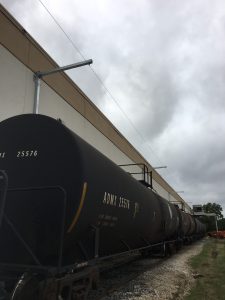 jib arm lifeline attached to concrete wall
jib arm lifeline attached to concrete wall
In the case of the photo shown above, due to space constraints, the only option was to anchor the lifeline to the building’s 8″, rebar-reinforced concrete wall. Our engineering department had to perform calculations to determine whether the wall was strong enough to support the loads associated with fall arrest, and then our installation crew needed to x-ray the wall to pinpoint the locations of the embedded rebar prior to drilling the holes needed to secure the jib supports.
Freestanding, gallows style lifeline systems come with their own set of structural design challenges: adequate foundations to support the system—and foundations with sufficient strength to handle the loads applied during a fall. Central to foundation design is information found in the geotechnical report detailing soil compaction levels and subsurface soil, rock, frost heave, and water table conditions.
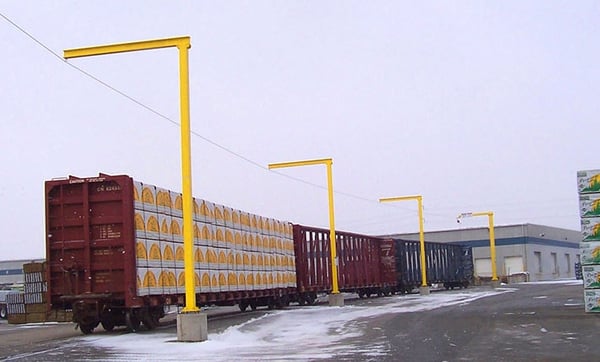
Here are some additional questions to consider when designing a fall protection system for a rail application:
- How many cars does the system need to access?
- What types of railcars and how many tracks are in the work area?
- Are the railcars and tankers always parked in the same location, or does their placement during loading/unloading vary?
- Does your application require a means of access and egress in addition to fall protection?
- Is the rail track straight or curved?
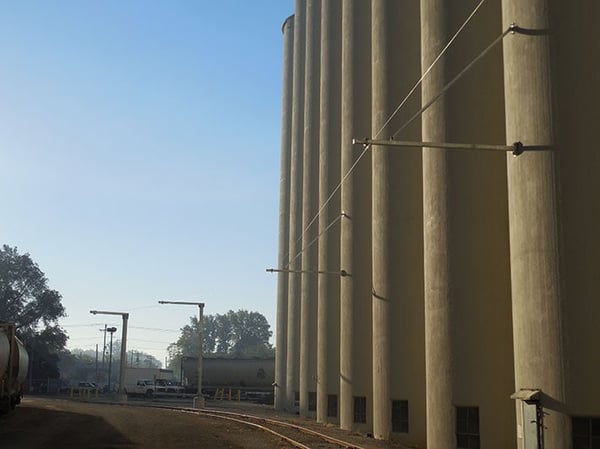
The picture above illustrates a curved line with an inverted L gallows style horizontal lifeline. Our engineering department’s PE determined that the silo structure had sufficient strength to attach intermediate supports to the concrete walls. Doing so not only saved our client money but also gave us a means of anchoring the lifeline through a section where it would have been difficult to pour foundations. Our in-house engineering capability allows us to design fall protection systems for curved tracks, multiple rail lines, and in tight spaces as shown in the photo above.
Remember, the height of a railcar is significantly less than a rooftop or a crane rail, but falls from as little as four feet can have devastating or even catastrophic consequences. What’s more, the complex nature of these applications—both the fall clearance distances and foundation requirements demand the attention of a qualified engineer. To learn more about railcar fall protection, or to request a site visit, contact the safety specialists at Diversified Fall Protection for further assistance.
Schedule an assessment with Diversified Fall Protection
Contact Us to request a fall safety review

b-1.jpg?width=1368&height=1340&name=Rail%20(175)b-1.jpg)

